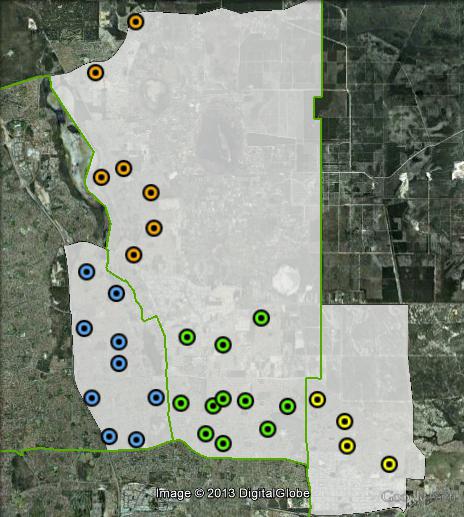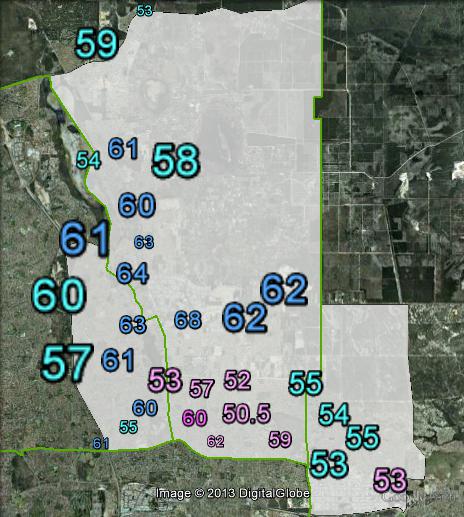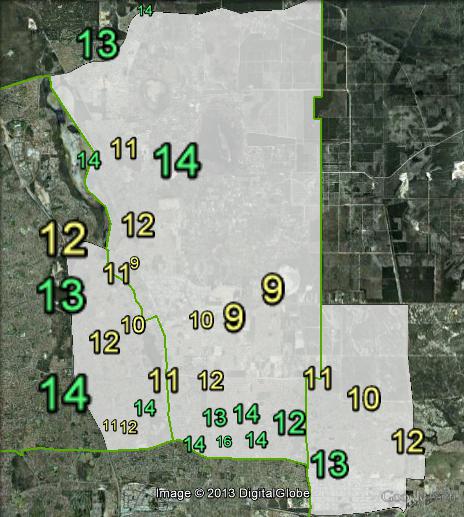LIB 6.3%
Incumbent MP
Luke Simpkins, since 2007.
Geography
Cowan covers parts of the northern suburbs of Perth. These include the suburbs of Ballajura, Marangaroo, Girrawheen, Greenwood, Kingsley, Woodvale, Wanneroo and Banksia Grove.
History
The seat was first created in 1984, and was first won by Carolyn Jakobsen of the ALP. Jakobsen held the seat until she was defeated by Richard Evans of the Liberal Party in 1993.
Evans was himself defeated in 1998 by wheelchair-bound Vietnam veteran and former state minister Graham Edwards, standing for the ALP. Edwards was a popular local member and held the seat until he retired at the 2007 election. The Liberals took the opportunity to win the seat off the ALP. Cowan was one of only two seats the Liberals gained in 2007.
Luke Simpkins won the seat in 2007, and gained a 5% swing in 2010, winning a second term.
Candidates
- Tristan Cockman (Labor)
- David Kingston (Australian Christians)
- Sheila Mundy (Rise Up Australia)
- Adam Collins (Greens)
- Che Tam Nguyen (Family First)
- Vimal Sharma (Palmer United Party)
- Luke Simpkins (Liberal)
Assessment
Cowan is a marginal seat, but in current circumstances the Liberal Party should comfortably hold on.
2010 result
| Candidate | Party | Votes | % | Swing |
| Luke Simpkins | LIB | 40,077 | 50.06 | +4.75 |
| Chas Hopkins | ALP | 25,975 | 32.45 | -9.91 |
| Rob Phillips | GRN | 10,033 | 12.53 | +6.83 |
| David Kingston | CDP | 2,081 | 2.60 | +0.70 |
| Alan Leach | FF | 1,888 | 2.36 | +0.64 |
2010 two-candidate-preferred result
| Candidate | Party | Votes | % | Swing |
| Luke Simpkins | LIB | 45,062 | 56.29 | +5.01 |
| Chas Hopkins | ALP | 34,992 | 43.71 | -5.01 |

Booth breakdown
Booths have been divided into four areas. About half of the population lies in Wanneroo council area, and these have been split into Central and North. Those in Joondalup council area have been grouped into “South-West”, and those in Swan council area have been grouped into “South-East”.
The Liberal Party won a majority in all four areas, with the majority varying from 52.3% in the south-east to 60.2% in the south-west.
The Greens polled between 11.6% and 12.6% in the four areas.
| Voter group | GRN % | LIB 2PP % | Total votes | % of votes |
| Central | 11.63 | 52.26 | 21,097 | 26.35 |
| South-West | 12.22 | 60.19 | 19,360 | 24.18 |
| North | 12.58 | 58.68 | 13,845 | 17.29 |
| South-East | 11.61 | 52.32 | 9,218 | 11.51 |
| Other votes | 14.53 | 57.08 | 16,534 | 20.65 |




Graph this in Excel if you get bored: the difference between the Labor vote in Cowan and in WA since 1984. Labor did 2-4% better than the state average for quite a while (generally trending upwards), then the difference went way up for 2001 and 2004 – a pair of great results there. It plummeted in 2007 to closer to the WA average than ever before, and then collapsed even further in 2010. Obviously some of that is due to (a) the departure of Edwards and (b) Simpkins’ sophomore swing, but even so… this part of Perth is turning blue. The northern part of the seat is some of Perth’s newest suburban development (Banksia Grove, Darch etc), not particularly friendly to Labor at the moment, but even what used to be rock steady Labor territory in the south is fading. Compare the state seats of Girrawheen and Nollamara (and predecessors) over the last few state elections, the same thing shows up. Must be a northern suburbs thing, because that sure as hell ain’t happening around Rockingham.
Prediction: 2-3% swing to the Libs, probably higher than the state average. Labor ain’t getting this one back for a while.
The suburbs of Madeley, Darch and Landsdale have been placed with the ALP heartland of Girrawheen/Koondoola/Marangaroo when they belong politically and demographically with the suburbs to their west and north.
Mr. Buxton, I think Madeley, Darch and Landsdale are grouped with their neighbours to the south largely because of the Wangara commercial park separating the two areas of Wanneroo.
Also, those three suburbs largely use the same services as Marangaroo/Alexander Heights/Girrawheen/Koondoola, particularly the first two, whereas the suburbs in the north of the seat are more reliant on Wanneroo itself for their services